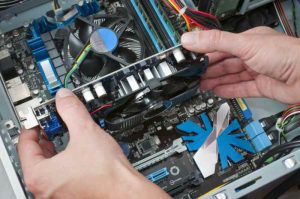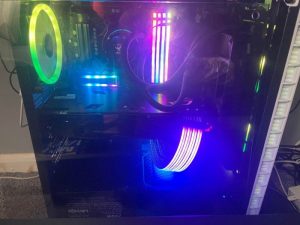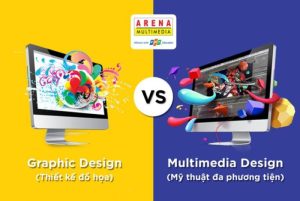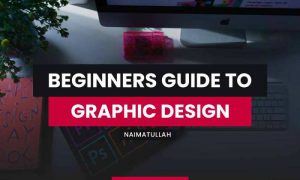
Embark on a journey into the world of digital e-books for students, where traditional textbooks meet modern technology to create a seamless learning experience like never before.
From enhancing learning through interactive features to reducing the environmental impact, the realm of digital e-books is bound to transform the way students engage with educational content.
Digital e-books for students
Digital e-books offer numerous benefits for students compared to traditional printed books. They are easily accessible, portable, and often more affordable than their printed counterparts. Additionally, digital e-books can be interactive, allowing students to engage with the material in a more dynamic way.
Popular Platforms for Digital e-books
- Amazon Kindle
- Google Play Books
- Apple Books
- Barnes & Noble Nook
Enhancing Learning Experience
Digital e-books can enhance the learning experience for students by offering features such as search functionality, hyperlinks, multimedia content, and the ability to take notes directly in the text. This interactive approach can help students better understand and retain the information they are studying.
Environmental Impact
Using digital e-books is more environmentally friendly than printed books, as it reduces the demand for paper production and transportation. By opting for digital versions, students can contribute to conservation efforts and help reduce carbon emissions associated with the publishing industry.
Electronics and Electrical
In the realm of digital e-books for students, electronics and electrical components play a crucial role in the development and functionality of e-book reading devices. Let’s delve into the significance of these components in creating a seamless reading experience.
Role of Electronics and Electrical Components
Electronics are essential in digital e-books as they are responsible for processing, storing, and displaying content. Electrical components such as batteries, circuits, and displays are key in ensuring the smooth operation of e-book readers.
- Electronics enable the storage of vast amounts of digital books in a compact device, allowing students to carry a library in their backpacks.
- Electrical circuits regulate the flow of power within e-book readers, ensuring efficient energy usage and prolonged battery life.
- The display technology in e-book readers, such as E Ink screens, relies on electrical signals to render text and images with clarity and minimal strain on the eyes.
Importance of Electrical Engineering
Electrical engineering plays a significant role in the design and production of devices tailored for reading digital e-books. Engineers in this field are responsible for optimizing power consumption, improving display quality, and enhancing user experience in e-book readers.
- Electrical engineers work on developing energy-efficient circuits to extend battery life and reduce the environmental impact of e-book readers.
- They collaborate with software developers to ensure seamless integration of hardware and software components, enhancing the overall performance of e-book reading devices.
- By leveraging their expertise in electronics, electrical engineers contribute to the continuous innovation and advancement of e-book reader technology, making reading more accessible and enjoyable for students.
Computer Repair and Consulting
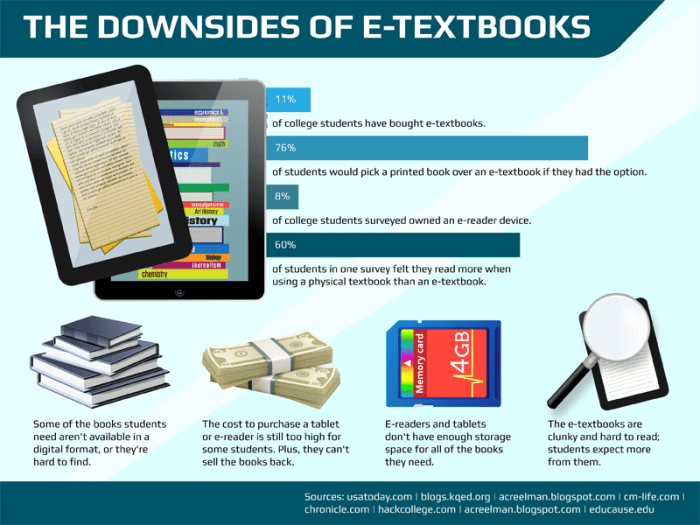
When it comes to accessing and reading digital e-books, computer issues can be a major hindrance. Here, we will discuss common problems that may arise and how computer repair and consulting services can help.
Common Computer Issues Related to E-book Reading
Before delving into troubleshooting tips, it’s important to understand some common computer issues that can affect e-book reading:
- Slow performance leading to lagging e-book loading times.
- Compatibility issues with e-book formats or reading apps.
- Hardware malfunctions like a faulty hard drive impacting e-book storage.
Tips on Troubleshooting Computer Problems for E-book Reading
Here are some tips to address computer issues that may impact your e-book reading experience:
- Ensure your software and operating system are up to date.
- Check for malware and viruses that could be slowing down your device.
- Clean up storage space to prevent lagging performance.
Role of Computer Repair Services in Device Maintenance for E-book Consumption
Computer repair services play a crucial role in maintaining devices for optimal e-book consumption:
- Diagnosing and fixing hardware issues affecting e-book reading performance.
- Optimizing device settings for seamless e-book access and reading.
- Repairing damaged components to ensure smooth e-book functionality.
Insights on Consulting Services for Optimizing Devices for E-book Reading
Consulting services can assist individuals in optimizing their devices specifically for e-book reading:
- Providing personalized recommendations for e-book reading apps and formats.
- Offering guidance on device maintenance practices to enhance e-book reading experience.
- Assessing device performance and suggesting upgrades for improved e-book accessibility.
Data Communication
In the realm of digital e-books, data communication plays a crucial role in ensuring seamless transfer of content between devices. Let’s delve into the significance of data communication protocols and technologies in the distribution and accessibility of e-books.
Role of Data Communication Protocols
Data communication protocols serve as the set of rules governing the exchange of data between devices. When it comes to transferring digital e-books to various devices, these protocols ensure that the content is transmitted accurately and efficiently. By defining how data should be formatted, transmitted, and received, protocols like TCP/IP or FTP enable e-books to be downloaded and accessed on different platforms.
Secure Data Communication for E-book Downloads
Secure data communication is paramount when downloading e-books from online platforms to protect sensitive information and prevent unauthorized access. Encryption protocols such as SSL/TLS safeguard the transmission of e-book files, ensuring that they reach the intended recipient securely without interception or tampering.
Examples of Data Communication Technologies for E-book Transmission
Wi-Fi
Wireless Fidelity technology enables e-books to be transmitted over local networks without the need for physical connections.
Bluetooth
This short-range wireless technology allows for the transfer of e-book files between devices like smartphones, tablets, and e-readers.
NFC (Near Field Communication)
NFC technology facilitates the quick exchange of e-book data by bringing compatible devices into close proximity, making it convenient for users to share content.
Impact of Data Communication on E-book Distribution
Efficient data communication mechanisms have revolutionized the distribution and accessibility of digital e-books. By enabling quick and reliable transmission of content over networks, data communication technologies have made it easier for users to download, store, and read e-books on a variety of devices. This accessibility has opened up new avenues for readers to explore a diverse range of e-books anytime, anywhere.
Computers E-Books
In today’s digital age, e-books have become a popular choice for students and professionals alike. When it comes to e-books specifically designed for computers, there are certain features and considerations that set them apart from e-books for other devices.
Features of Computer E-Books
- Enhanced formatting and layout for larger screens.
- Interactive elements such as quizzes and multimedia content.
- Compatibility with specialized software for note-taking and highlighting.
- Ability to integrate with online resources and databases for research purposes.
Compatibility with Operating Systems
- E-books designed for computers are typically compatible with all major operating systems, including Windows, macOS, and Linux.
- Users may need specific e-reader software or applications depending on the file format of the e-book.
- Popular e-book formats like PDF and EPUB are widely supported across different operating systems.
Optimizing Reading Experience
- Consider using e-reader applications like Adobe Digital Editions or Calibre for managing and reading e-books on computers.
- Adjust screen brightness and font settings for optimal reading comfort.
- Utilize features like bookmarks, annotations, and search functionality to enhance the reading experience.
Future Trends
- Integration of virtual reality and augmented reality technologies for immersive e-book experiences.
- Personalized learning experiences based on user preferences and reading habits.
- Increased focus on accessibility features for users with disabilities.
- Continued growth of digital libraries and subscription services for e-books on computers.
Graphics and Multimedia
In the digital age, graphics and multimedia elements play a crucial role in enhancing the learning experience for students through e-books. These visual aids not only make the content more engaging but also help in simplifying complex concepts.
Interactive Features in E-books
Incorporating interactive features like videos and animations in e-books can significantly impact the learning experience. For example, a video tutorial can provide step-by-step instructions on a particular topic, making it easier for students to grasp the content. Similarly, animations can visualize abstract concepts, making them more understandable and memorable for students.
- Interactive simulations can allow students to actively engage with the content and experiment with different scenarios, promoting a deeper understanding of the subject matter.
- Quizzes and interactive exercises can help in assessing students’ comprehension and providing immediate feedback, enhancing the learning process.
- Audio narrations can cater to different learning styles and make the content more accessible to a wider range of students.
Innovative Integration of Graphics
Educational e-books are increasingly utilizing innovative ways to integrate graphics and multimedia elements. For instance, augmented reality can bring static images to life, creating an immersive learning experience. Infographics and mind maps can condense complex information into visually appealing formats, aiding in better retention and understanding.
It is essential to strike a balance between text and visuals in e-books to ensure that the graphics enhance the learning process without overwhelming the students.
Importance of Accessibility and Usability
When designing graphics for e-books, accessibility and usability should be top priorities. Ensuring that graphics are clear, high-quality, and accessible to students with disabilities is crucial for creating an inclusive learning environment. Additionally, optimizing multimedia elements for different devices and screen sizes can enhance the overall user experience.
- Alt text for images should be provided to assist visually impaired students in understanding the content.
- Color contrast should be carefully chosen to ensure readability for all students, including those with color vision deficiencies.
- Navigation within multimedia elements should be intuitive and user-friendly to enhance the overall usability of the e-book.
Computers Hardware

When it comes to reading digital e-books on computers, having the right hardware is essential to ensure a smooth and enjoyable reading experience. Let’s delve into the hardware requirements and recommendations to enhance your e-book reading experience.
Hardware Requirements for E-Book Reading
- Screen Resolution: A higher screen resolution ensures sharper text and images, making it easier to read e-books without straining your eyes.
- Battery Life: Longer battery life allows you to read e-books for extended periods without interruptions, especially when you don’t have access to a power source.
- Processor and RAM: A faster processor and sufficient RAM ensure that your computer can handle e-book applications smoothly without lagging or freezing.
Upgrading Computer Hardware for E-Book Reading
- Upgrade to a Higher Resolution Display: Consider upgrading to a monitor or laptop with a higher resolution display for clearer text and images.
- Invest in a Long-Lasting Battery: If you often read e-books on the go, investing in a laptop with a longer battery life can significantly enhance your reading experience.
- Upgrade Processor and RAM: If your computer is struggling to handle e-book applications, upgrading the processor and RAM can improve performance and responsiveness.
E-Book Format Compatibility with Computer Hardware
- Epub: Compatible with most computers and e-readers, offering a reflowable layout for easy reading on different screen sizes.
- PDF: Widely supported by computers but may require zooming in and scrolling due to fixed layout, affecting readability on smaller screens.
- Mobi: Commonly used for Amazon Kindle devices but may require conversion for optimal viewing on computers with different e-book applications.
Last Point
As we wrap up our exploration of digital e-books for students, it’s clear that the future of learning lies in the palm of your hand. Embrace the digital revolution and unlock a world of knowledge at your fingertips.
Query Resolution
Are digital e-books cost-effective for students?
Yes, digital e-books often come at a lower price point compared to printed books, making them a more affordable option for students.
Can digital e-books be accessed offline?
Some platforms offer offline access to digital e-books, allowing students to study even without an internet connection.
Do digital e-books offer interactive learning features?
Absolutely! Many digital e-books include interactive elements like quizzes, videos, and animations to engage students in a dynamic learning experience.
How can students contribute to environmental sustainability by using digital e-books?
By opting for digital e-books, students reduce paper waste and contribute to a greener environment by minimizing the need for printed materials.
